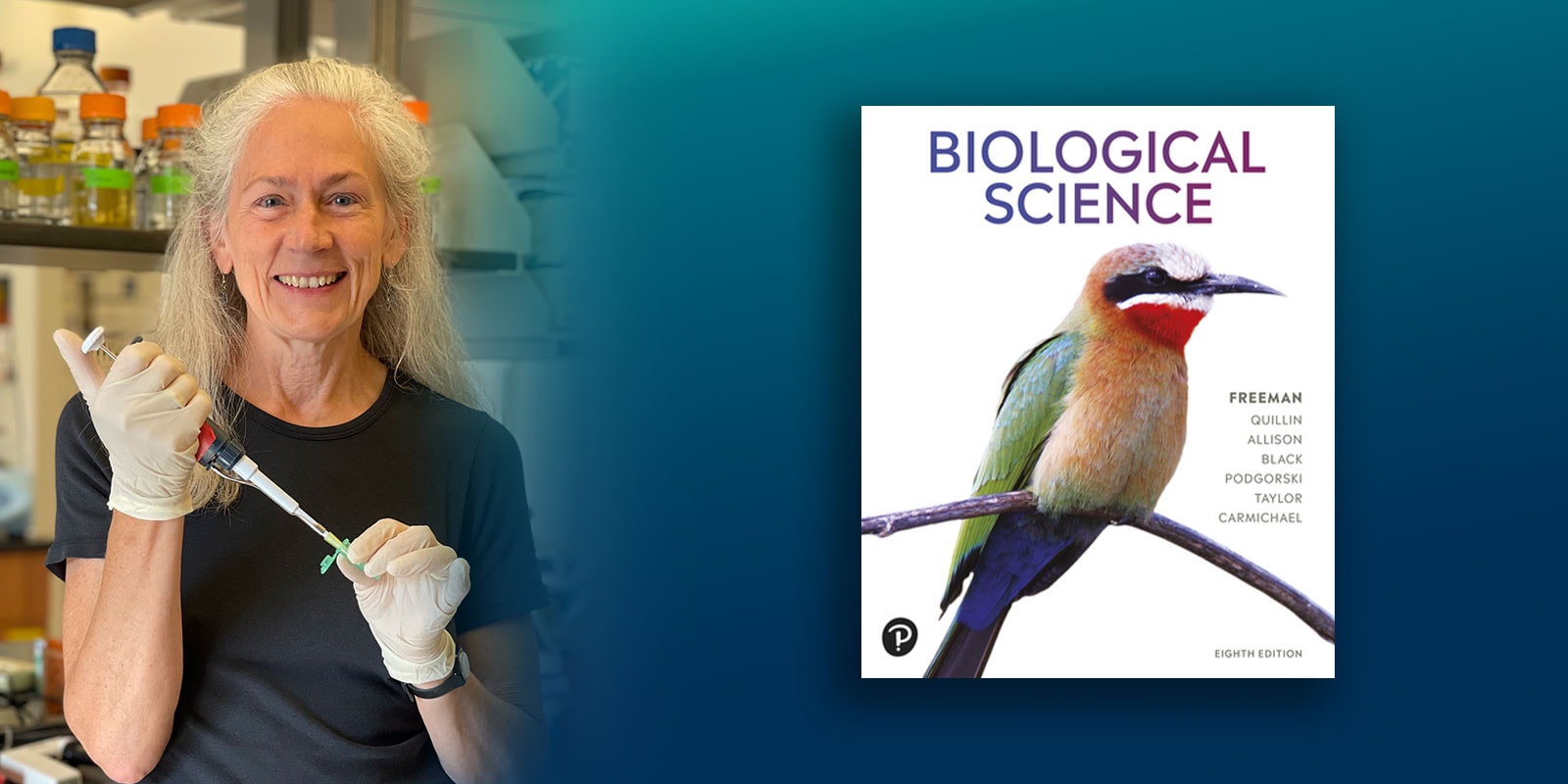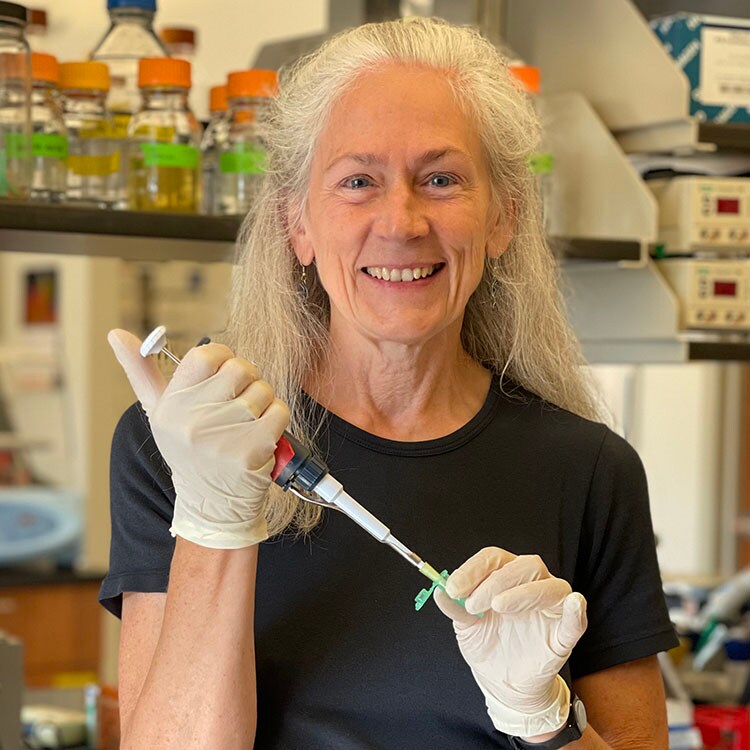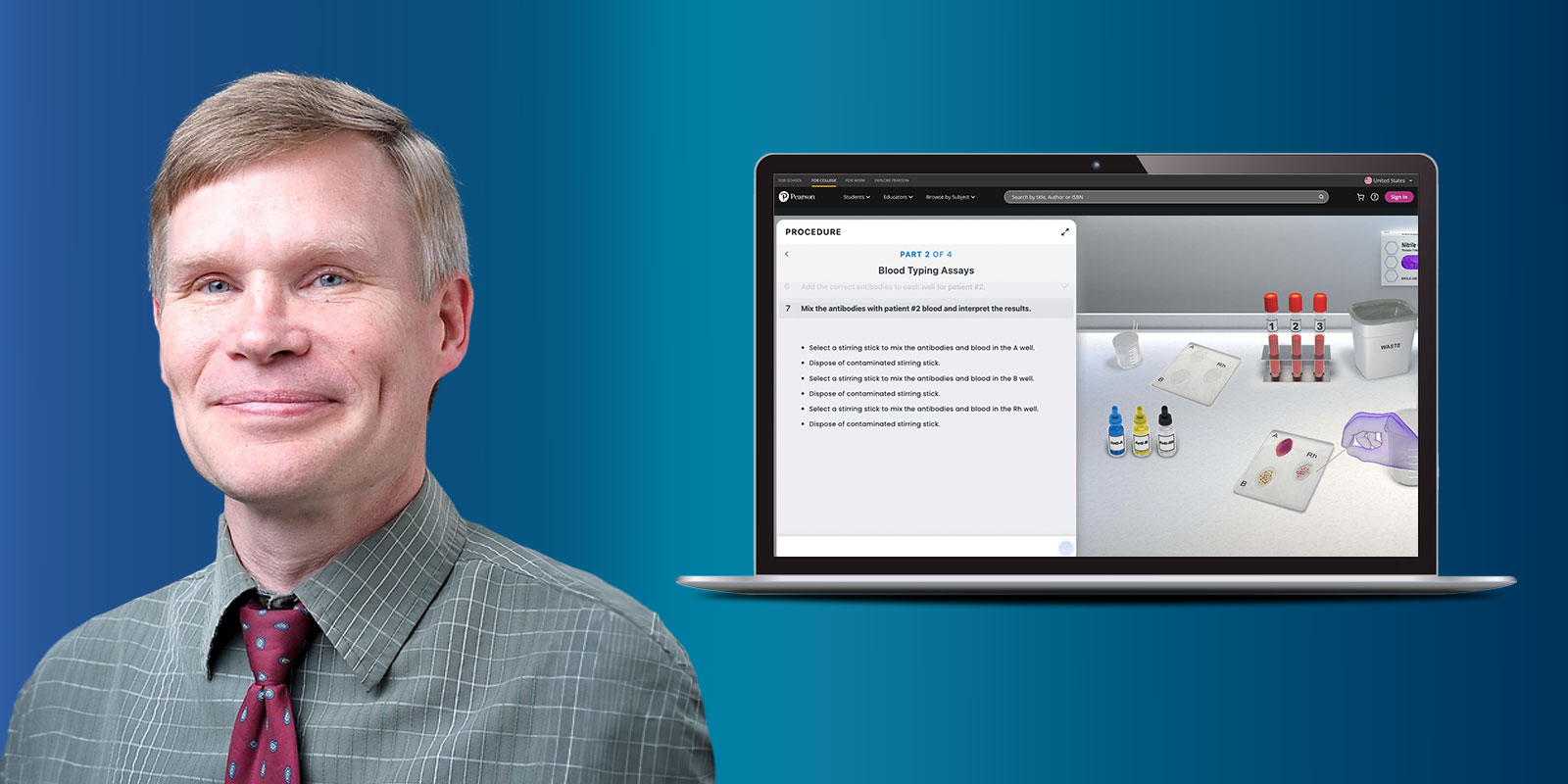
Meet Lizabeth Allison, author on Biological Science

What course(s) do/did you teach and where?
I taught “Introduction to Molecules, Cells, & Development” at the College of William & Mary for many years and currently teach an upper division molecular genetics course and lab, along with an advanced seminar course on nuclear structure and gene activity.
What is a challenge that you’re currently facing in the classroom? How did/do you try to overcome this challenge?
Many students tend to immediately go to the internet when they are struggling with a concept, rather than using their textbook or other assigned readings as a resource. Negative impressions about textbooks being “boring” or “not helpful” seem to be established in high school and linger on throughout college.
When I taught introductory biology using Biological Science, the way I tried to overcome this challenge was to frequently point out to students in class how Biological Science tells an exciting story in each chapter, with an emphasis on the process of scientific discovery. I also made a point to highlight all the special student-focused, interactive features of the textbook that help them learn to think like biologists, provide opportunities for practice, and offer strategies for success.
What is the biggest lesson you’ve learned in the past few years regarding teaching biology?
As a scientist engaged in curiosity-driven, basic biomedical research that is far-removed from clinical application, I would have to say that I am fundamentally fascinated by all aspects of biology, whether they are directly relevant to my life or not.
The biggest lesson I’ve learned in the past few years is that students today, more than ever before, want to understand the relevance of course content to their lives. I strive even harder now to make links to current events and topics that resonate with students, such as making connections that highlight how understanding fundamental molecular and cellular processes has led to advances in biotechnology, treating human diseases, and understanding the potential impacts of climate change on human health.
What is one best practice that you use that you think works well and you would want to share with others, whether it's in a classroom setting, working in groups, or working one-on-one with a new teaching technology?
The best practice that I think works well to foster an inclusive environment in my classroom is that I use a variety of modalities to deliver content and conduct assessments, even in a large class.
I use PowerPoint lectures supplemented with videos, assigned readings in a textbook or from the primary literature, in-class group work on case study worksheets, short-answer exams that are based on a study guide made available before the exam, and a primary literature-based written assignment.
Within this suite of content-delivery and assessment modes, if students put in the effort, there is room for success across a diversity of learning styles and backgrounds.
What are you most proud of in your career?
In both the classroom and my research lab, I am proud of my success in cultivating talent and providing encouragement and opportunities for all biologists in the making, without arbitrary filters such as skin color, ethnicity, gender identity, or neurodiversity, to name but a few.
In your opinion, what is higher education going to look like in the next two to three years?
I think there will be an even greater emphasis on hands-on learning and developing specific practical skills that convey to the job market or better prepare students for post-graduate study.
The 8th Edition of Biological Science is being released this year. What excites you the most about this revision?
I am most excited about the addition of the Human Angle feature. It’s so important for students to feel a sense of belonging in biology and to discover the many diverse careers that are possible with a degree in biology. Flipping through the textbook and seeing photos of a diverse group of people whose careers employ biology concepts and/or skills featured in the textbook brings biology to life.
About the author

Lizabeth Allison, The College of William and Mary
Lizabeth A. Allison is Chancellor Professor of Biology and has served two terms as the Chair of the Biology Department (2009-2014 and 2021-2024) at William & Mary (Williamsburg, Virginia). She received a B.S. and M.S. from the University of Alaska-Fairbanks, a Ph.D. in Zoology (Molecular and Cellular Biology) from the University of Washington, and spent 8 years as a faculty member at the University of Canterbury in Christchurch, New Zealand. At William & Mary since 1997, Liz currently teaches upper-division molecular biology courses. She is a coauthor of Biological Sciences, now in its 8th edition, and sole author of Fundamental Molecular Biology, now in its 3rd edition. She has mentored numerous graduate students and over 160 undergraduate research students, many of them coauthoring peer-reviewed papers with her on NIH and NSF-funded research. Her major research focus is on thyroid hormone receptor intracellular trafficking and the role of receptor mislocalization in pathogenesis. Liz is the recipient of numerous awards, including a State Council for Higher Education in Virginia Outstanding Faculty Award in 2009, the 2020 Thomas A. Graves, Jr. Award for Sustained Excellence in Teaching, the 2020 Ruth Kirschstein Diversity in Science Award from the American Society for Biochemistry & Molecular Biology, and a Plumeri Award for Faculty Excellence in 2022.



